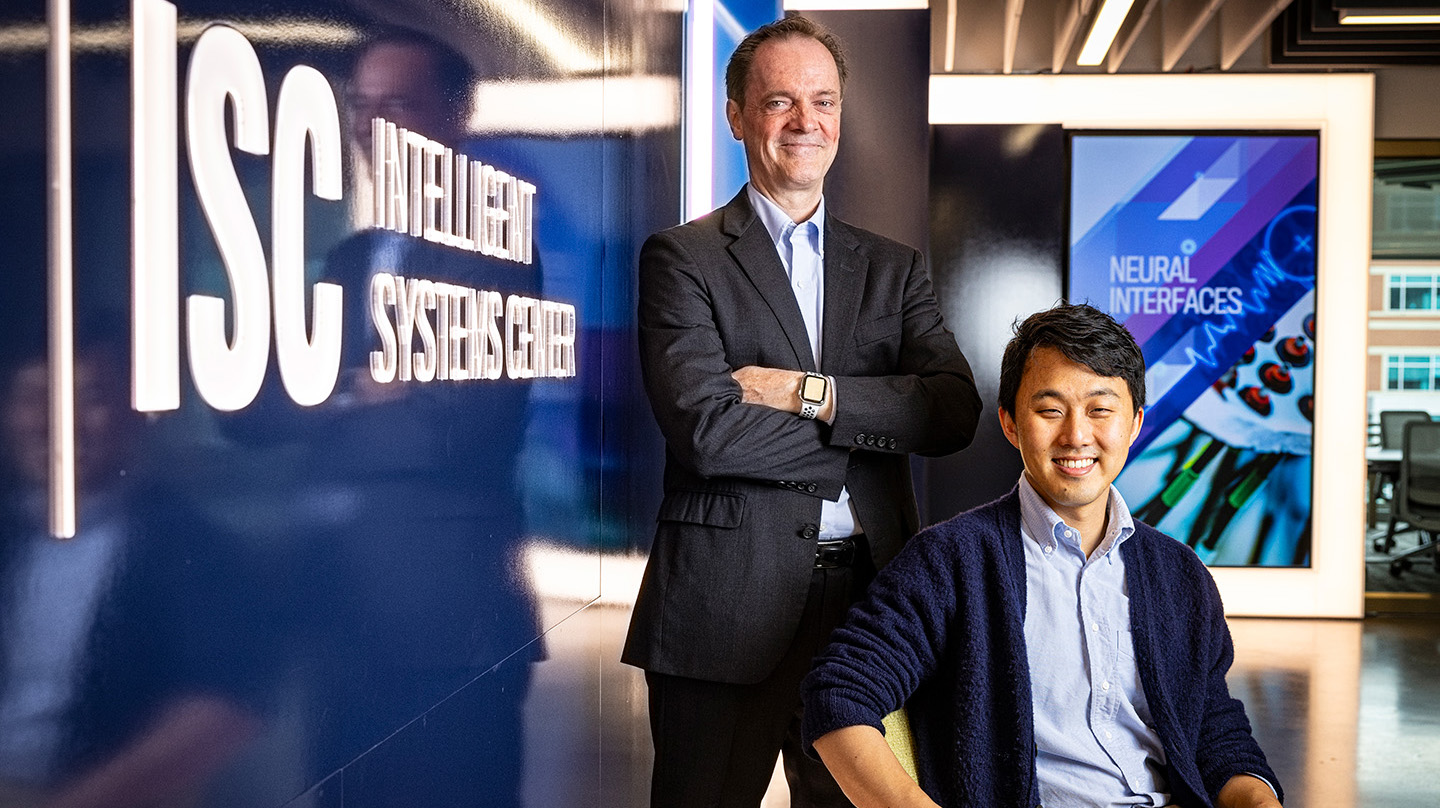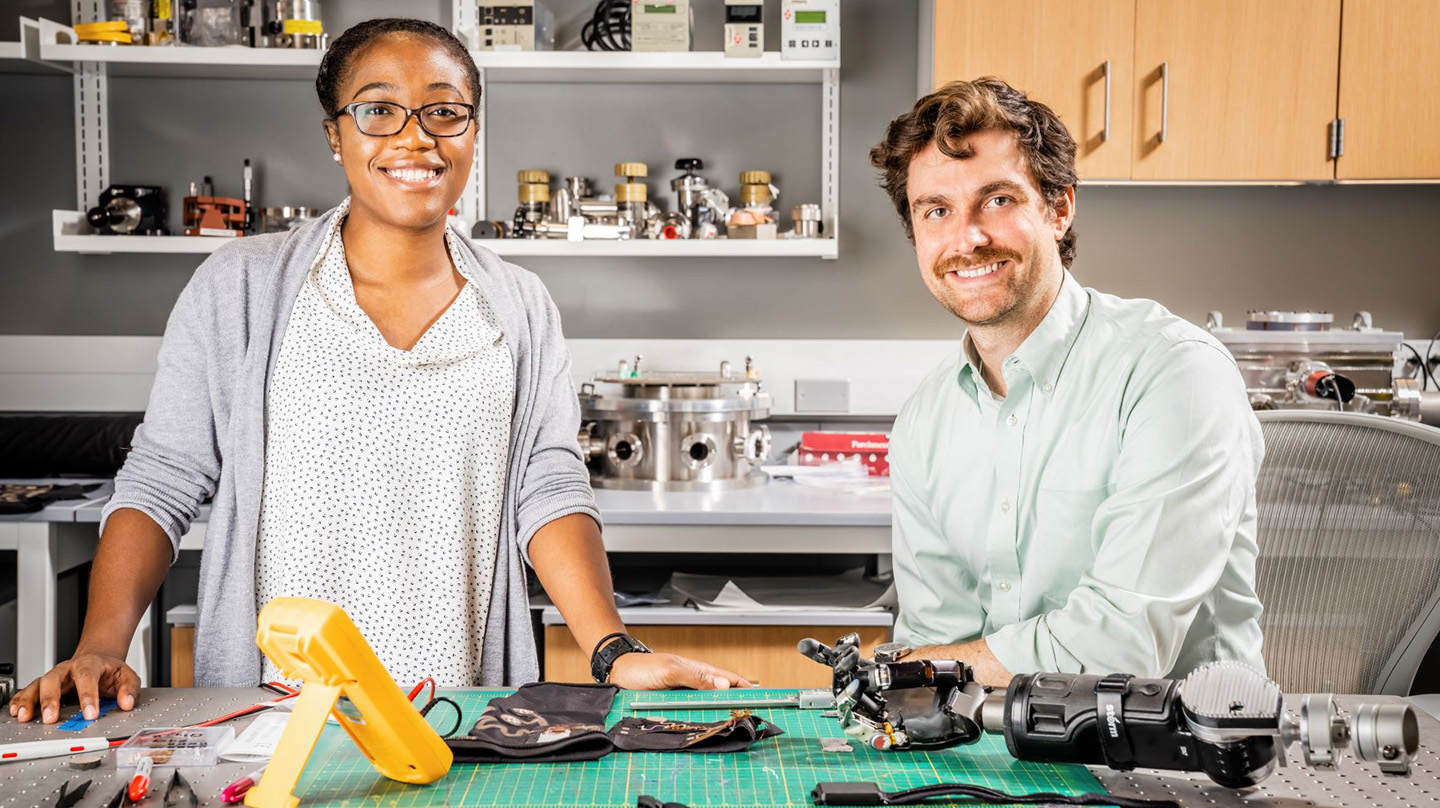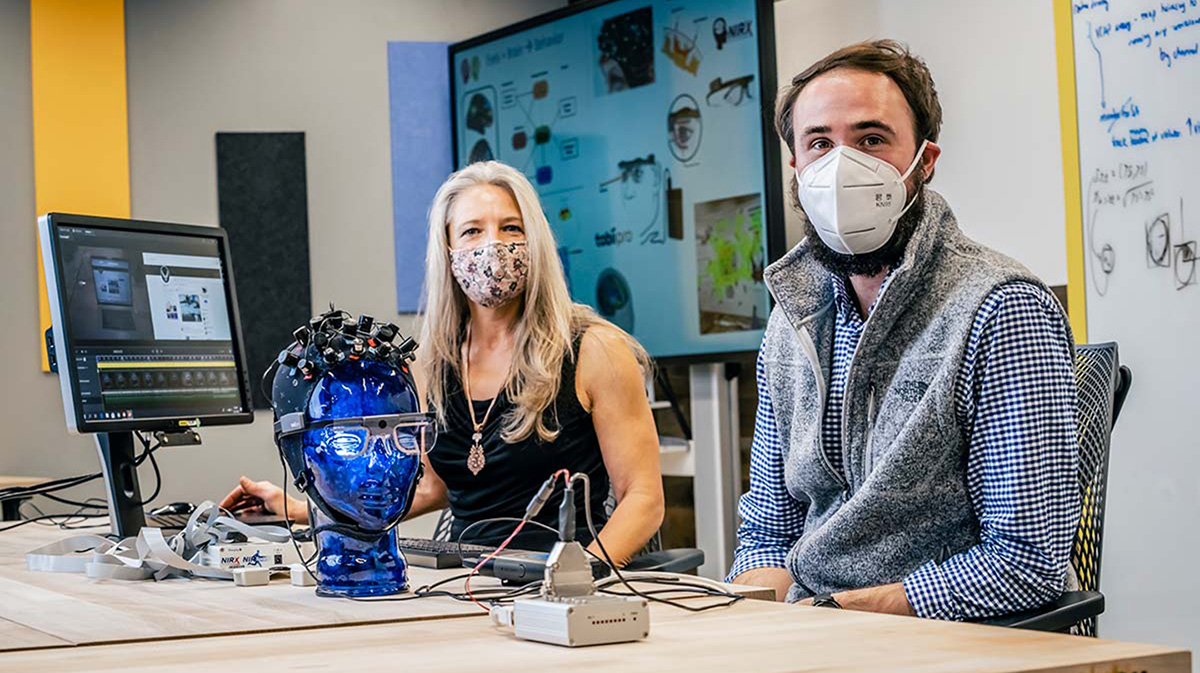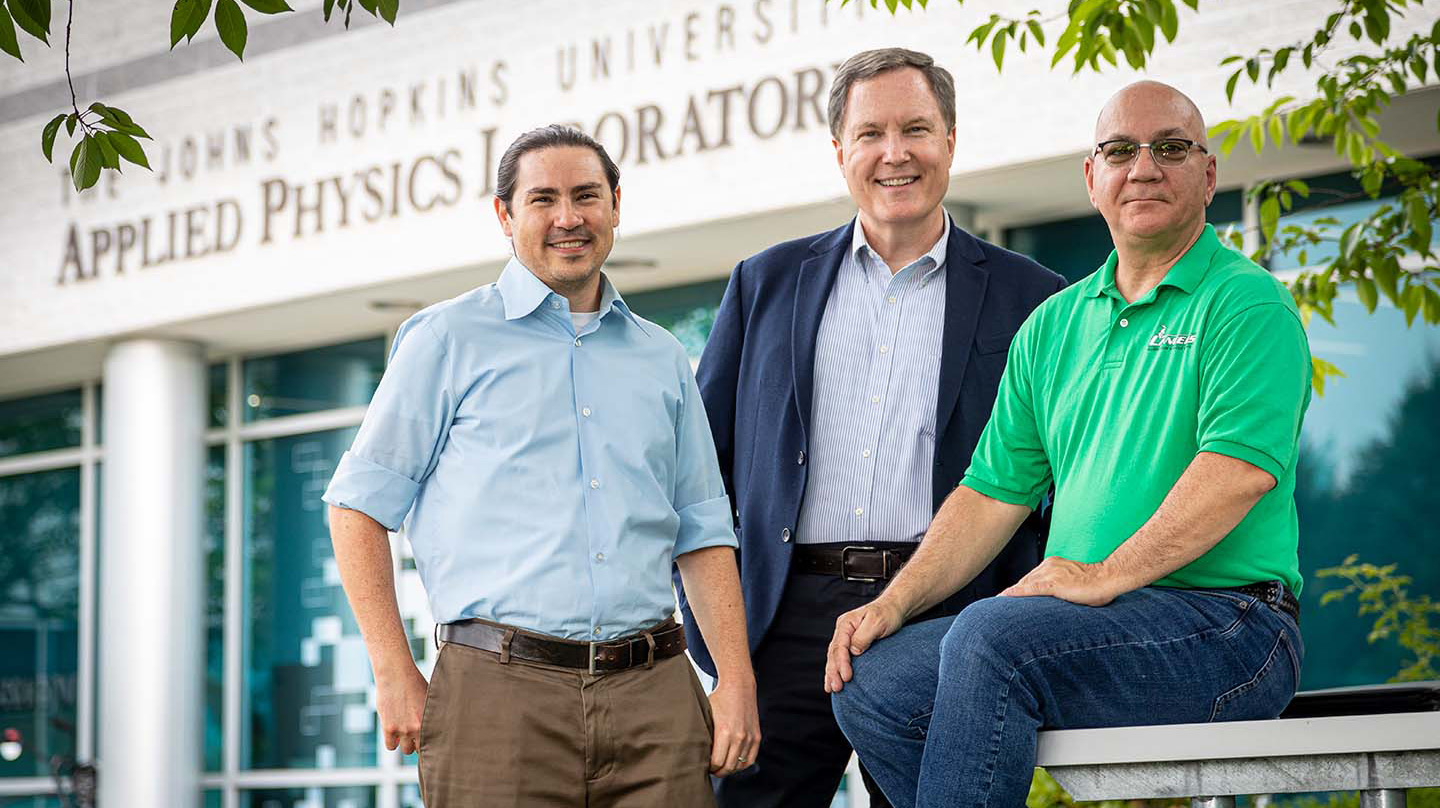Press Release
Johns Hopkins APL Researchers Earn 2023 Johns Hopkins Discovery Grants
Five teams featuring Johns Hopkins Applied Physics Laboratory (APL) investigators have earned 2023 Johns Hopkins Discovery Awards. The APL researchers were among 115 individuals from teams selected to receive awards of up to $100,000 per team.
Johns Hopkins University (JHU) launched the Discovery Awards program in 2015 to encourage cross-university collaborations that lead to impactful work. Teams must include members from at least two schools or affiliates of the university. The 35 winning project teams, chosen by faculty members from 191 proposals, feature individuals representing 10 Johns Hopkins entities.
Helping Locked-In Syndrome Patients Communicate
Locked-in syndrome (LIS) often results from severe brain-stem injury or damage, such as from stroke, traumatic brain injury or certain neurological diseases, such as Lou Gehrig’s disease (also known as amyotrophic lateral sclerosis). The condition leaves individuals fully conscious and aware but unable to move or communicate, except in rare cases where some limited eye movements or blinking are possible. It is a highly debilitating condition that significantly affects a person’s quality of life and independence.
LIS patients rely on their caregivers to initiate communication, which is a slow and exhausting process. Researchers are exploring the use of brain-computer interfaces (BCIs) to decode the patients’ intended messages from neural activity, but this method requires invasive surgery to access clean neural signals.
APL’s Han Yi, a cognitive neuroscientist specializing in the neural basis of spoken communication, is collaborating with Dr. Nathan Crone, of Johns Hopkins Medicine (JHM), on an approach to generate context-sensitive sentences using foundation models and multimodal sensing technology. BCIs can then be used to choose or refine the sentences, using less-invasive methods to collect neural signals outside the skull.
“The potential impact of this work is significant for LIS patients who struggle to communicate their thoughts, feelings and needs,” Yi said. “Locked-in syndrome severely limits basic functions and often leaves patients feeling a loss of agency due to the inability to communicate freely. Creating a system that allows these patients to connect with loved ones and the world would have immediate benefits. It would enhance their quality of life and restore a sense of autonomy.”
Restoring the Heart’s Electrical Signals
Researchers are working on a project to restore the conduction path of the heart’s electrical signals by creating conduits and an electrical interface. Normally, a small electrical current travels from the heart’s sinoatrial node — its natural pacemaker — to the atrioventricular node, which transmits pulses to the heart muscles and ensures proper contraction of the ventricles. An atrioventricular node malfunction can cause abnormally slow heart rhythms.
Severe cases require a ventricular pacemaker, but that can lead to complications that include an increased risk of heart failure hospitalization, atrial fibrillation and pacing-induced cardiomyopathy for individuals with a single ventricle pacemaker.
APL’s Paul Kucher, an expert in microelectronics design and fabrication, is collaborating with Hee Cheol Cho, a cardiac physiology expert at JHM, to develop a solution that mimics the atrioventricular node and restores the conduction path for the electrical signals. The team specifically aims to develop an alternative approach that can restore the conduction path without the associated risks.
Strengthening Clean Energy Supply Chains
Dan Ockerman, an APL industrial engineer, is collaborating with colleagues from JHU’s Engineering and Arts and Sciences schools to develop a tool that will help plan the expansion of power grids while considering the limitations of supply chains for renewable energy and storage technologies.
As the demand for these technologies increases, Ockerman explained, it is important to understand the vulnerabilities and uncertainties associated with their supply chains — factors such as the availability of raw materials, logistics and production capabilities.
“Currently, power grid capacity expansion models do not consider these supply chain constraints and assume that these technologies are readily available,” he said. “However, with the strain on supply chains expected to grow, it is uncertain how accurately these models will reflect the reality, posing risks to the decarbonization of the power sector and society-wide electrification.”
Funded in part by the Ralph O’Connor Sustainable Energy Institute, the researchers aim to address this knowledge gap by studying the interdependency between supply chain constraints and incentives provided by government agencies.
“By incorporating these constraints into capacity expansion models, we hope to be able to determine when, where and in what quantities renewable and storage assets should be deployed to meet climate and clean-energy goals,” Ockerman said.
Tackling AI’s Overconfidence Problem
Another Discovery-funded collaboration aims to address the issue of overconfident errors in modern artificial intelligence (AI) models, particularly when it comes to minority groups. These AI models, like deep neural networks, sometimes make incorrect predictions with high confidence, especially for subpopulations that were not well represented in the networks’ training data. This happens because the models are poorly calibrated and cannot accurately communicate their true capabilities, which can have significant implications in social and policy contexts.
APL’s I-Jeng Wang will join forces with colleagues in Medicine, Engineering, and Arts and Sciences to lay the technical foundation for uncertainty calibration across subpopulations and demonstrate initial results using AI-assisted health care and online tutoring as examples.
“Social distrust of AI often stems from using incomplete or biased data sources that do not represent the diverse population adequately. This can lead to biased treatments for disadvantaged groups based on factors like ethnicity, gender or social class,” Wang said. “By calibrating AI models in health care and educational decision-making problems, we hope to gain insights into building socially responsible AI applications across all domains.”
Cyber Operations as a Geopolitical Instrument
APL cyber systems engineer Rob Heald is working with Thomas Rid and Elly Rostoum, colleagues from the School of Advanced International Studies’ Alperovitch Institute, to explore the gap between sensational discourse surrounding cyberattacks and their actual impact on national security policies and posture.
The team’s collaborative research project, RUBICON, stems from the belief that Russia’s cyber performance during the war against Ukraine has not met the expectations set by Russia’s previous highly capable cyberattacks.
The researchers will undertake several specific objectives, including identifying and cataloging the most significant computer network operations during the Russia-Ukraine war, developing a typology for these operations, ranking them by impact and exploring the evolution of Russian cyber operations tradecraft. Additionally, the team will explore cyber-kinetic coordination in the context of the war, study the Russian use and integration of cyber capabilities throughout the conflict, and analyze aspects such as the ransomware market and Russian digital operational security measures.
Heald explained that RUBICON is a play on terms held across the cyber domain — think DEFCON or CYBERWARCON — and that the researchers feel like the world is approaching a “crossing the Rubicon” moment in the domain’s coordinated involvement in conflicts, such as the one between Russia and Ukraine.
“Our goal is to enhance the quality of analysis produced by Johns Hopkins University and to foster interdisciplinary collaboration among staff and teams,” he said. “By raising the standard of cyber warfare analysis, the partnership strives to ensure that our understanding of cyber operations better aligns technology development with the intended policy objectives to strengthen our responses in times of crisis.”




